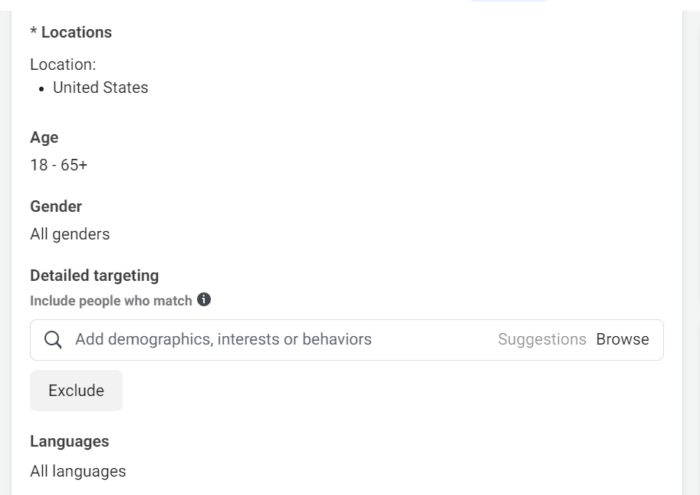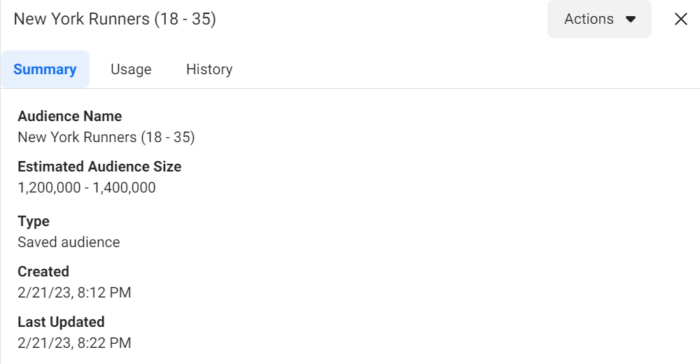Facebook Ads have revolutionized digital marketing, providing businesses with a cost-effective and highly targeted platform to reach millions of potential customers.
Despite its massive user base and robust advertising tools, many businesses struggle to achieve satisfactory conversions from their Facebook ad campaigns.
Investing in Facebook Ads without understanding why they fail can be frustrating and costly.
This comprehensive guide will explore the top seven reasons your Facebook Ads might not be converting and offer actionable solutions to fix each issue.
By identifying these common pitfalls and implementing the suggested fixes, you’ll be on your way to maximizing your ad spend and improving your return on investment (ROI).
1. Poor Targeting
The Problem
One of the most significant reasons Facebook Ads fail to convert is poor audience targeting. Facebook offers an extensive range of targeting options, but many businesses either target too broadly or too narrowly.
Broad targeting may result in showing ads to people who have no interest in your product, while overly narrow targeting can limit your reach and fail to scale your campaigns.
The Fix
Use Custom Audiences:
Custom Audiences allow you to target users who have already interacted with your brand, such as website visitors, email subscribers, or previous customers.
This audience is already familiar with your brand, making them more likely to convert.
Leverage Lookalike Audiences:
Lookalike Audiences help you reach new users similar to your existing customers. By creating a Lookalike Audience based on your best customers, Facebook will find people with similar behaviors and interests, increasing the chances of conversions.
Utilize Detailed Targeting:
Take advantage of Facebook’s detailed targeting options to segment audiences by demographics, interests, and behaviors. Combine multiple layers of targeting to create a well-defined audience persona.
Exclude Irrelevant Audiences:
Use exclusions to prevent your ads from being shown to people who are unlikely to convert. For instance, exclude existing customers from campaigns focused on acquiring new leads.
2. Lack of Audience Data
The Problem
Running Facebook Ads without understanding your audience is like shooting in the dark. If you don’t know who your customers are, what they want, or how they behave, your ad campaigns will likely miss the mark.
The Fix
Analyze Facebook Insights:
Facebook Insights provides valuable data on your audience’s demographics, behaviors, and engagement. Use this data to refine your targeting strategy.
Study Website Analytics:
Google Analytics and Facebook Pixel can help you understand user behavior on your website. Identify which pages attract the most traffic and use that information to tailor your ad content.
Create Customer Personas:
Develop detailed customer personas based on age, gender, location, interests, and online behavior. This approach helps in crafting messages that resonate with your target audience.
Conduct Surveys and Feedback:
Engage with your current customers through surveys and feedback forms to gather insights into their needs, preferences, and pain points.
3. Not Choosing the Right Bidding Option and Bidding the Right Amount
The Problem
Facebook offers various bidding strategies, and choosing the wrong one can lead to inefficient spending. Overbidding wastes budget, while underbidding may prevent your ads from being shown to the right audience.
The Fix
Understand Facebook Bidding Strategies:
Facebook provides multiple bidding options, such as:
- Lowest Cost: Facebook aims to get you the most results for your budget.
- Cost Cap: Allows you to control your average cost per result.
- Bid Cap: Gives you full control over the maximum bid.
Choose the bidding strategy that aligns with your campaign objectives and budget.
Test and Optimize:
Start with a modest budget and experiment with different bidding options. Monitor performance and adjust bids based on results.
Allocate Budget Wisely:
Distribute your budget between prospecting and retargeting campaigns. Allocate more budget to high-performing ads and pause underperforming ones.
4. Failing to Create Click-Worthy Ads
The Problem
No matter how well you target your audience, if your ads are dull, poorly designed, or lack a compelling message, they won’t drive clicks or conversions. Facebook users scroll quickly, and you have only a few seconds to capture their attention.
The Fix
- Use Eye-Catching Visuals:
High-quality images and engaging videos are crucial. Use bright colors, human faces, and dynamic visuals to stand out in the feed.
- Craft Compelling Copy:
Write clear, persuasive ad copy that highlights the value proposition. Use power words and emotional triggers to engage readers.
- Include Strong Calls-to-Action (CTAs):
Guide users on what to do next with action-driven CTAs like “Shop Now,” “Learn More,” or “Sign Up.”
- Test Multiple Formats:
Experiment with different ad formats such as carousel ads, video ads, and stories to see what resonates best with your audience.
5. Pitching Cold Audiences
The Problem
Trying to sell to cold audiences—people who have never heard of your brand—rarely results in conversions. These users need to be nurtured before they’re ready to make a purchase.
The Fix
Build Brand Awareness First:
Start with campaigns that focus on brand awareness or engagement. Introduce your brand through educational or entertaining content.
Implement Retargeting Strategies:
Use Facebook Pixel to track website visitors and retarget them with product offers or special deals. Retargeting warm audiences significantly increases conversion rates.
Utilize the Sales Funnel Approach:
Guide users through the sales funnel:
- Top of Funnel (ToFu): Awareness campaigns
- Middle of Funnel (MoFu): Engagement and lead generation
- Bottom of Funnel (BoFu): Conversion-focused ads
6. Lack of Experimentation
The Problem
Relying on a single strategy without testing and optimization can stagnate your campaign’s performance. Facebook Ads require constant tweaking to stay effective.
The Fix
A/B Testing:
Run split tests on different ad creatives, copy, headlines, and CTAs to identify what works best.
Experiment with Placements:
Test various ad placements (News Feed, Stories, Audience Network) to determine where your audience engages the most.
Adjust Targeting Parameters:
Regularly refine your targeting based on campaign performance and audience insights.
Monitor and Optimize:
Use Facebook Ads Manager to analyze performance metrics and make data-driven adjustments.
7. Lack of Alignment Between Landing Pages and Ads
The Problem
A common mistake is creating ads that promise one thing but lead to landing pages that deliver something different. This disconnect can confuse visitors and cause them to leave without converting.
The Fix
Maintain Message Consistency:
Ensure that your ad copy, visuals, and offers match the landing page content. Consistency builds trust and improves conversions.
Optimize Landing Page Design:
Design user-friendly, mobile-optimized landing pages with fast load times and clear CTAs.
Simplify the Conversion Process:
Remove unnecessary fields from forms and reduce steps to make it easier for users to convert.
Use A/B Testing on Landing Pages:
Test different landing page layouts, headlines, and CTAs to find the most effective combination.
FAQs
How do I know if my Facebook Ads are targeted correctly?
Monitor key metrics like click-through rates (CTR), conversions, and engagement. Use Facebook Insights to analyze your audience’s behavior and adjust targeting accordingly.
What is the best budget to start Facebook Ads?
Start with a modest budget of $5-$10 per day and scale up based on performance. Focus on testing and optimization before increasing your ad spend.
How long should I run my Facebook Ads before making changes?
Allow your ads to run for at least 3-5 days to gather enough data before making significant adjustments.
How can I improve my ad copy?
Focus on clear, concise messaging that highlights your unique selling points. Use emotional triggers and strong CTAs to prompt action.
Why is retargeting important in Facebook Ads?
Retargeting allows you to engage users who have already shown interest in your brand, significantly increasing the likelihood of conversion.
Can I run Facebook Ads without a website?
Yes, you can run ads to drive engagement on your Facebook page, collect leads via forms, or direct users to a landing page or messenger bot.
Conclusion
Facebook Ads offer incredible potential for business growth, but only when executed correctly. By addressing these seven common mistakes—poor targeting, lack of audience data, incorrect bidding strategies, unappealing ads, cold audience pitching, lack of experimentation, and misaligned landing pages—you can significantly improve your conversion rates.
Success in Facebook advertising requires ongoing analysis, experimentation, and optimization. Implement these fixes today to unlock the full potential of your Facebook Ads and drive meaningful business results.
An avid blogger, dedicated to boosting brand presence, optimizing SEO, and delivering results in digital marketing. With a keen eye for trends, he’s committed to driving engagement and ROI in the ever-evolving digital landscape. Let’s connect and explore digital possibilities together.








